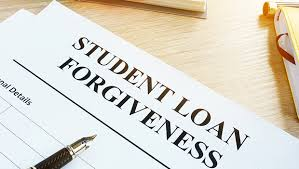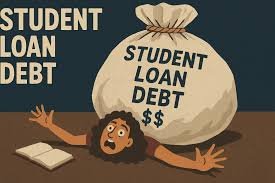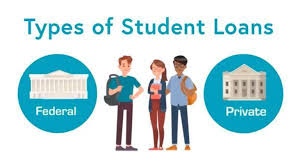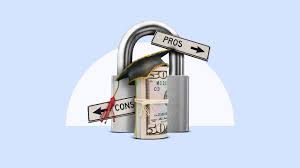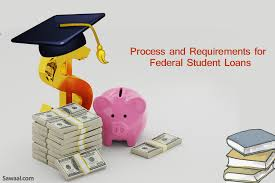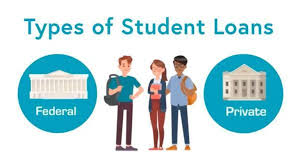How Much Can You Borrow with a Federal Student Loan?
Introduction
When it comes to financing your higher education in the United States, federal student loans can be a lifeline. They offer lower interest rates, more favorable repayment terms, and greater flexibility compared to private loans. One of the most important factors to consider when taking out a federal student loan is how much you can borrow. Understanding this can help you manage your finances and make informed decisions about how to fund your education.
This article will dive deep into the different types of federal student loans, the limits on how much you can borrow, eligibility criteria, and the factors that influence these limits. We will also discuss the repayment terms, as well as the various options available to help manage your student debt after graduation.
Key Takeaways
- Loan Limits: The amount you can borrow varies based on your dependency status, academic year, and the type of loan.
- Subsidized vs. Unsubsidized: Subsidized loans are need-based and do not accrue interest while you are in school. Unsubsidized loans accrue interest at all times.
- Repayment Flexibility: Federal student loans offer a variety of repayment plans, including income-driven options.
- Borrow Wisely: It’s important to borrow only what you need for school and living expenses, as student loan debt can quickly add up.
Types of Federal Student Loans
Before we get into the specifics of borrowing limits, it is important to understand the different types of federal student loans available:
1. Direct Subsidized Loans
Direct Subsidized Loans are available to undergraduate students who demonstrate financial need. The U.S. Department of Education pays the interest on these loans while the borrower is enrolled at least half-time, during the six-month grace period after leaving school, and during any deferment periods.
2. Direct Unsubsidized Loans
Direct Unsubsidized Loans are available to both undergraduate and graduate students and do not require financial need. Interest on these loans accrues while you are in school, during the grace period, and during deferment periods. The borrower is responsible for paying the interest at all times.
3. Direct PLUS Loans
Direct PLUS Loans are for graduate or professional students and parents of dependent undergraduate students. These loans are unsubsidized, meaning that interest accrues throughout the life of the loan. PLUS loans are not based on financial need but do require a credit check.
4. Direct Consolidation Loans
A Direct Consolidation Loan allows borrowers to combine multiple federal student loans into one loan with a single monthly payment. This can make loan management simpler but does not change the terms of the original loans.
Federal Student Loan Borrowing Limits
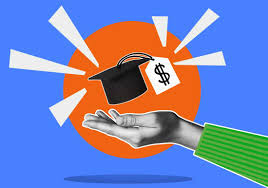
Federal student loan borrowing limits vary based on the type of loan, the student’s year in school, and the student’s dependency status. These limits are set by the U.S. Department of Education and are designed to ensure that students do not borrow more than they can reasonably repay.
Undergraduate Students
Undergraduate students can borrow money through either Direct Subsidized or Direct Unsubsidized Loans. The borrowing limits for these loans are determined by the student’s dependency status (whether they are considered a dependent or independent student) and their year in school.
- Dependent Students:
Dependent students are those who are claimed as dependents on their parents’ tax returns. The borrowing limits for dependent students are typically lower than for independent students.- First-year students: Dependent undergraduate students can borrow up to $5,500 per year, with no more than $3,500 of that being in subsidized loans.
- Second-year students: Dependent undergraduate students can borrow up to $6,500 per year, with no more than $4,500 of that being in subsidized loans.
- Third-year and beyond: Dependent undergraduate students can borrow up to $7,500 per year, with no more than $5,500 of that being in subsidized loans.
- Total Limit: The total borrowing limit for dependent undergraduate students is $31,000, with no more than $23,000 of that being in subsidized loans.
- Independent Students:
Independent students are those who are not claimed as dependents on their parents’ tax returns. They can borrow more money through federal student loans.- First-year students: Independent undergraduate students can borrow up to $9,500 per year, with no more than $3,500 of that being in subsidized loans.
- Second-year students: Independent undergraduate students can borrow up to $10,500 per year, with no more than $4,500 of that being in subsidized loans.
- Third-year and beyond: Independent undergraduate students can borrow up to $12,500 per year, with no more than $5,500 of that being in subsidized loans.
- Total Limit: The total borrowing limit for independent undergraduate students is $57,500, with no more than $23,000 of that being in subsidized loans.
Graduate or Professional Students
Graduate and professional students are eligible for Direct Unsubsidized Loans and Direct PLUS Loans.
- Direct Unsubsidized Loans:
Graduate students can borrow up to $20,500 per year through Direct Unsubsidized Loans. This is in addition to any PLUS Loans they may be eligible for. - Direct PLUS Loans:
Graduate or professional students can borrow up to the cost of attendance (COA), minus any other financial aid they receive. The COA includes tuition, fees, living expenses, and other related costs.
Parents of Dependent Undergraduate Students
Parents of dependent students can borrow through the Direct PLUS Loan program. Parents can borrow up to the cost of attendance minus any other financial aid received by the student.
Loan Limits by School
The cost of attendance (COA) varies from one school to another. While federal student loan limits are set by the Department of Education, individual schools may also have their own policies regarding loan limits. If your school’s cost of attendance is higher than the federal loan limits, you may be able to borrow additional funds through other means, such as private loans or other federal programs.
Eligibility for Federal Student Loans

To qualify for federal student loans, students must meet certain eligibility requirements. These include:
- Enrollment Status: Students must be enrolled at least half-time in a degree or certificate program at a participating school.
- Citizenship: Students must be U.S. citizens or eligible non-citizens.
- Financial Need: Some loans, like Direct Subsidized Loans, are only available to students who demonstrate financial need.
- Academic Progress: Students must maintain satisfactory academic progress as defined by their school.
- Loan History: Students must not be in default on any prior federal student loans.
Factors Affecting Loan Limits
While the basic borrowing limits are set by the Department of Education, several factors can influence how much you are actually eligible to borrow. These include:
- Cost of Attendance: The higher your school’s cost of attendance, the more you may be eligible to borrow.
- Dependency Status: Independent students generally have higher borrowing limits than dependent students.
- Academic Year: Borrowing limits increase as students progress from one academic year to the next.
Understanding Federal Student Loan Borrowing Limits

Federal student loans are a crucial resource for many students pursuing higher education. The amount you can borrow depends on various factors, including your dependency status, year in school, and the type of loan. Here’s a comprehensive breakdown:
1. Undergraduate Students
Dependent Students
- First Year: Up to $5,500 annually, with no more than $3,500 in subsidized loans.
- Second Year: Up to $6,500 annually, with no more than $4,500 in subsidized loans.
- Third Year and Beyond: Up to $7,500 annually, with no more than $5,500 in subsidized loans.
- Aggregate Limit: $31,000, with no more than $23,000 in subsidized loans.
Independent Students
- First Year: Up to $9,500 annually, with no more than $3,500 in subsidized loans.
- Second Year: Up to $10,500 annually, with no more than $4,500 in subsidized loans.
- Third Year and Beyond: Up to $12,500 annually, with no more than $5,500 in subsidized loans.
- Aggregate Limit: $57,500, with no more than $23,000 in subsidized loans.
Note: If you’re a dependent student and your parents are unable to obtain a PLUS loan, you may be eligible for the independent student borrowing limits.
2. Graduate or Professional Students
- Annual Limit: Up to $20,500 in Direct Unsubsidized Loans.
- Aggregate Limit: $138,500, including any federal loans received for undergraduate study.
Note: Graduate students are not eligible for Direct Subsidized Loans.
3. Parent PLUS Loans
- Annual Limit: Parents can borrow up to the cost of attendance minus any other financial aid received by the student.
Note: The total amount borrowed through Parent PLUS loans cannot exceed the student’s cost of attendance.
Factors Influencing Borrowing Limits
Several factors can affect the amount you can borrow through federal student loans:
- Cost of Attendance (COA): The total estimated cost of attending your school, including tuition, fees, room and board, and other associated costs.
- Expected Family Contribution (EFC): An estimate of your family’s financial strength, used to determine your eligibility for need-based aid.
- Dependency Status: Whether you’re considered a dependent or independent student affects your borrowing limits.
- Year in School: Your academic year determines your annual borrowing limits.
- Enrollment Status: Whether you’re enrolled full-time or part-time can impact your eligibility and loan amounts.
How Federal Student Loan Limits Are Determined
Borrowing limits depend on multiple factors:
- Student’s dependency status (dependent vs. independent)
- Year in school (freshman, sophomore, junior/senior)
- Enrollment status (full-time, part-time)
- Cost of attendance (COA) minus other financial aid
- Loan type (subsidized, unsubsidized, PLUS)
Annual and Aggregate Loan Limits
Undergraduate Students:
| Academic Year | Dependent Students | Independent Students |
|---|---|---|
| 1st Year | $5,500 (up to $3,500 subsidized) | $9,500 (up to $3,500 subsidized) |
| 2nd Year | $6,500 (up to $4,500 subsidized) | $10,500 (up to $4,500 subsidized) |
| 3rd Year and Beyond | $7,500 (up to $5,500 subsidized) | $12,500 (up to $5,500 subsidized) |
| Total Aggregate | $31,000 (max $23,000 subsidized) | $57,500 (max $23,000 subsidized) |
Graduate and Professional Students:
- Annual Limit: $20,500 (unsubsidized only)
- Aggregate Limit: $138,500, including undergrad loans
Borrowing Limits Based on Academic Level
Loan limits increase as students progress in their studies. A freshman will typically receive less aid than a senior due to the assumption of a shorter enrollment period and lower cumulative need.
Dependency Status and How It Affects Borrowing
Dependent Students:
- Lower borrowing limits
- Expected parental support
Independent Students:
- Higher loan limits
- Typically self-supporting
If parents of dependent students are denied a PLUS loan, students may be allowed to borrow at the independent student limit.
Borrowing for Graduate and Professional Degrees
Graduate students no longer qualify for subsidized loans but may borrow:
- Up to $20,500 annually in unsubsidized loans
- Additional funds through Graduate PLUS Loans, up to full Cost of Attendance (COA)
Parent PLUS Loans: Limits and Use
- Not subject to standard federal loan limits.
- Parents can borrow up to the full cost of attendance, minus any aid the student receives.
- Subject to credit check.
- Repayment can be deferred while the student is in school.
Professional Judgment and Special Circumstances
Financial aid officers can use “professional judgment” to adjust borrowing limits or financial need due to:
- Loss of income
- Family emergencies
- Medical expenses
These are exceptions, not rules.
How to Increase Your Borrowing Capacity
- Apply as an independent student if eligible.
- Request a PLUS loan if you’re a parent or grad student.
- Seek professional judgment adjustments.
- Transfer to schools with higher COA (though this increases debt risk).
Tracking Your Loan Usage
Use StudentAid.gov or NSLDS to:
- Check your current balance
- Track your borrowing history
- Review remaining eligibility
Avoiding Overborrowing
Just because you can borrow doesn’t mean you should. Overborrowing can lead to:
- Long-term debt burden
- Lower credit scores
- Difficulty qualifying for future credit (e.g., mortgage)
Loan Limits and FAFSA Process
- FAFSA determines eligibility for federal loans.
- Schools use FAFSA data to create your aid package.
- FAFSA doesn’t guarantee you’ll get the maximum allowed—only what you need.
Loan Limits vs. Cost of Attendance
If the COA is less than the annual limit, you’ll receive less than the max.
- You cannot borrow more than the COA minus other aid.
- Even if eligible for the max, loan amounts are capped by need.
Loan Limits and Academic Progress
To remain eligible:
- Maintain Satisfactory Academic Progress (SAP)
- Stay enrolled at least half-time
- Avoid academic probation or suspension
Special Loan Programs and Exceptions
- Health Professions Student Loans (HPSL): Higher limits for medical/dental students
- Military Service Deferment: May affect eligibility window
- TEACH Grants: Convertible to loans if terms are unmet
What Happens After Hitting the Limit
- You become ineligible for more federal loans.
- May need to explore:
- Private loans
- Scholarships
- Employer tuition assistance
- Part-time work
Federal Loan Limit Changes and Legislative Updates
Recent proposals (as of 2024–2025) include:
- Capping federal loan totals at $50,000 (UG) and $100,000 (Grad)
- Eliminating Parent PLUS Loans
- Consolidating income-driven repayment plans
Stay updated via StudentAid.gov and Congressional legislation.
Private vs. Federal Loan Borrowing Caps
| Feature | Federal Loans | Private Loans |
|---|---|---|
| Limit | Capped annually & lifetime | Based on creditworthiness |
| Interest | Fixed (generally lower) | Variable or fixed |
| Forgiveness | Available | Rare |
| Credit check | Not required (except PLUS) | Required |
Recent Legislative Changes and Proposals
It’s important to stay informed about potential changes to federal student loan policies. Recent proposals have suggested modifications to borrowing limits and repayment plans:
- Proposed Borrowing Caps: Some proposals suggest capping federal student loans at $50,000 for undergraduates and $100,000 for graduate students starting July 1, 2026.
- Simplified Repayment Plans: There’s a push to streamline repayment options, potentially reducing the number of income-driven repayment plans from four to one.
- Elimination of PLUS Loans: Some proposals aim to eliminate the Direct PLUS Loan program for graduate students and parents of dependent undergraduates.
Factors Influencing Borrowing Limits
Several factors can affect the amount you can borrow through federal student loans:
- Cost of Attendance (COA): The total estimated cost of attending your school, including tuition, fees, room and board, and other associated costs.
- Expected Family Contribution (EFC): An estimate of your family’s financial strength, used to determine your eligibility for need-based aid.
- Dependency Status: Whether you’re considered a dependent or independent student affects your borrowing limits.
- Year in School: Your academic year determines your annual borrowing limits.
- Enrollment Status: Whether you’re enrolled full-time or part-time can impact your eligibility and loan amounts.
Recent Legislative Changes and Proposals
It’s important to stay informed about potential changes to federal student loan policies. Recent proposals have suggested modifications to borrowing limits and repayment plans:
- Proposed Borrowing Caps: Some proposals suggest capping federal student loans at $50,000 for undergraduates and $100,000 for graduate students starting July 1, 2026.
- Simplified Repayment Plans: There’s a push to streamline repayment options, potentially reducing the number of income-driven repayment plans from four to one.
- Elimination of PLUS Loans: Some proposals aim to eliminate the Direct PLUS Loan program for graduate students and parents of dependent undergraduates.
Note: These are proposed changes and have not yet been enacted. It’s essential to monitor legislative developments for updates.
Repayment Terms for Federal Student Loans
The terms of repayment for federal student loans are one of their major advantages. Below are the key aspects of federal student loan repayment:
Interest Rates
Interest rates on federal student loans are fixed, meaning they do not change over time. For undergraduate loans, the interest rate for Direct Subsidized and Direct Unsubsidized Loans is set by Congress each year. For graduate and professional students, the rate for Direct Unsubsidized Loans and PLUS Loans is typically higher.
Grace Period
After graduating, leaving school, or dropping below half-time enrollment, borrowers typically have a six-month grace period before they are required to start repaying their loans. During this period, no payments are due, although interest may still accrue on unsubsidized loans.
Repayment Plans
Federal student loans come with several repayment plans. These include:
- Standard Repayment Plan: Fixed monthly payments for up to 10 years.
- Graduated Repayment Plan: Payments start low and gradually increase every two years.
- Income-Driven Repayment Plans: Payments are based on your income and family size and can extend the repayment period.
- Extended Repayment Plan: Payments are fixed or graduated and extend over 25 years.
Loan Forgiveness Programs
Certain federal student loan borrowers may be eligible for loan forgiveness programs, such as Public Service Loan Forgiveness (PSLF), which can discharge the remaining loan balance after a set number of years of qualifying payments while working in a public service job.
Also Read:- Do I Qualify for Federal Student Loan Forgiveness?
Conclusion
Federal student loans are an essential tool for financing a college education in the U.S. The amount you can borrow depends on various factors, including your dependency status, your year in school, and the type of loan you are applying for. Understanding these limits and how they align with your school’s cost of attendance is crucial for managing your student loan debt effectively.
FAQs
- How do I know how much I can borrow for my federal student loan?
The amount you can borrow depends on your year in school, whether you are a dependent or independent student, and the type of loan you are applying for. You can refer to the Department of Education’s official loan limits or consult your school’s financial aid office. - Can I borrow more than the federal loan limits?
If your school’s cost of attendance exceeds the federal loan limits, you may be able to borrow additional funds through other financial aid options, such as private loans. - What is the difference between subsidized and unsubsidized loans?
Subsidized loans are for students who demonstrate financial need, and the government pays the interest while you’re in school. Unsubsidized loans are available to all students regardless of need, but interest accrues while you’re in school. - Are there any credit requirements for federal student loans?
Federal student loans, such as Direct Subsidized and Unsubsidized Loans, do not require a credit check. However, Direct PLUS Loans require a credit check. - Can I apply for a federal loan if I’ve defaulted on another loan?
If you are in default on a previous federal student loan, you may not be eligible for new federal student loans until you resolve the default status. - What happens if I borrow more than I need for school?
If you borrow more than you need, you can return the excess loan funds to your lender. This will reduce the amount of interest you will have to pay in the future. - Can I borrow money for living expenses?
Yes, federal student loans can be used to cover tuition, fees, and living expenses, including room and board, books, and supplies.


